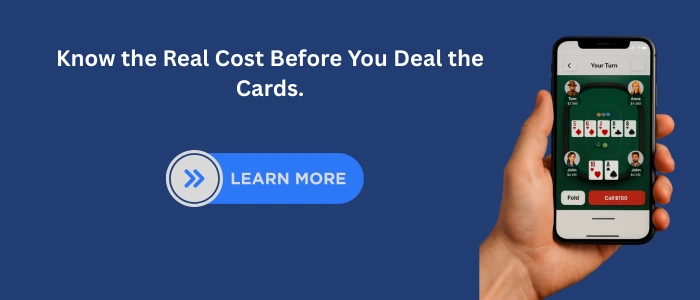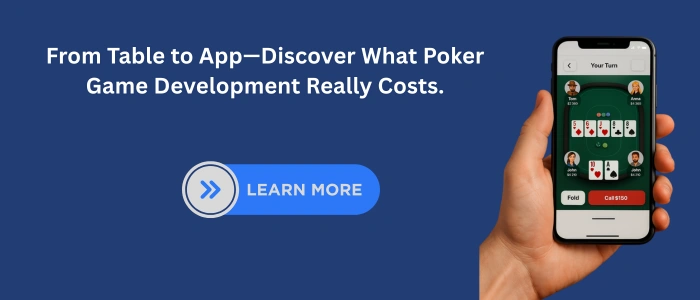Introduction
Poker has evolved from a table game to a booming digital product. With millions of players logging into mobile apps every day, the demand for poker apps has surged. Entrepreneurs and game studios are exploring this opportunity. But one of the first questions that arises is: how much does it cost to develop a poker game app?
This blog breaks down the total poker game app development cost. It also covers how to develop a poker game app, key features, and variables that influence pricing. We’ll also address the cost to build a real-money poker app, along with the process of online poker game development.
Factors Affecting Poker Game App Development Cost
Estimating the development cost of a poker game app requires an understanding of several components that influence the pricing structure. These components not only determine the budget but also the time, technology, and resources needed. Whether building a simple poker game or a full-fledged platform with advanced features, factoring in these variables is essential.
Multiple elements shape the overall cost of developing a poker game. These include:
1. Platform Selection
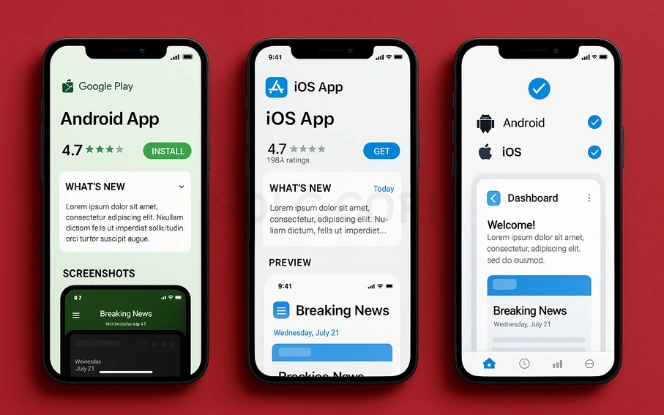
The choice of platform plays a foundational role in both budget and user reach. Developing for a single platform, such as Android or iOS, can limit expenses but reduce your potential user base. On the other hand, building for both platforms enhances reach but raises cost. Native development provides optimal performance, whereas cross-platform solutions like Flutter offer cost-efficiency with slight trade-offs in performance.
Learn more about Essential Game Development Tools You Need in Your Arsenal and how they impact app pricing.
2. Game Type
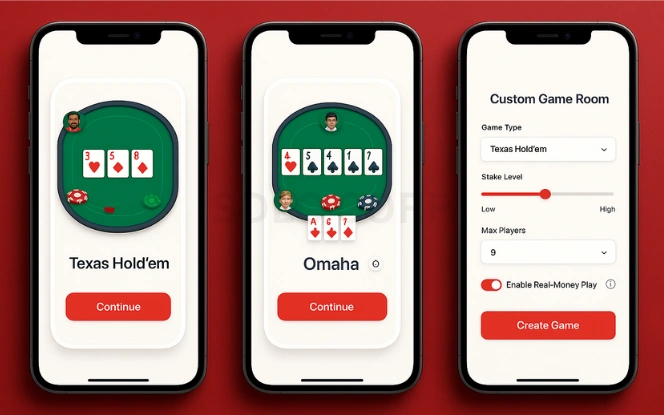
Different variants of poker appeal to different demographics. Whether you go for Texas Hold’em, Omaha, or a customizable game room impacts the game logic complexity. Each variant has its own ruleset, AI behavior, and scoring mechanics. The inclusion of multiple formats like Sit & Go or multi-table tournaments also increases coding effort and testing scope.
3. Design Complexity
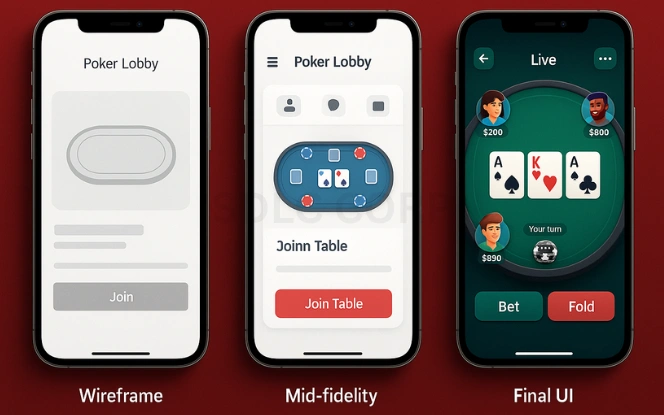
A well-crafted user interface not only enhances user experience but also boosts engagement. Basic UI design with minimal animations can suffice for early-stage apps. However, custom animations, transitions, avatars, and interactive tutorials significantly increase the time and cost of development. Higher design fidelity often leads to better retention and in-app purchases.
Discover how The Importance of UI/UX in Android Game Design
4. Real-Money Integration
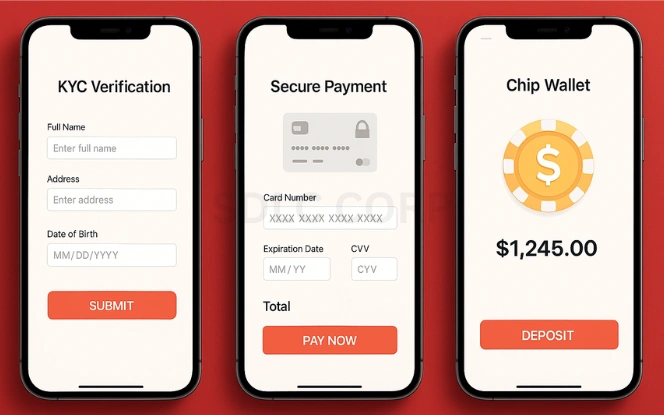
Incorporating real-money elements introduces regulatory, financial, and technical requirements. Compliance with local and international gambling laws is mandatory, requiring legal consultation and certification. Real-money play demands secure payment processing, risk monitoring, and financial audits, which all contribute to a higher overall budget.
5. Features and Functionality

Each additional feature adds value but also complexity. From user registration and matchmaking to wallets and chat systems, your feature list determines development duration and cost. Core functionality should be prioritized during initial builds, while non-critical enhancements can be added in future updates to manage costs.
Dive into our guide on Top Features Every Online Rummy Game Must Have for a checklist.
6. Development Team
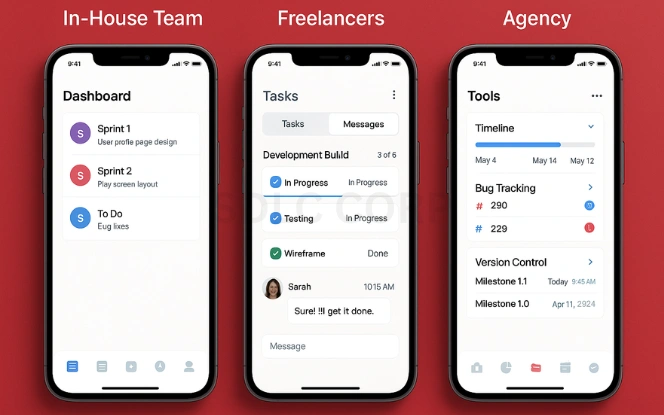
Your choice of development team influences cost, speed, and quality. In-house teams offer control but come with higher operational expenses. Freelancers may be cost-effective but risk inconsistent quality. Engaging a professional poker app development company often provides the right mix of domain expertise and project management.
7. Backend and Server Infrastructure
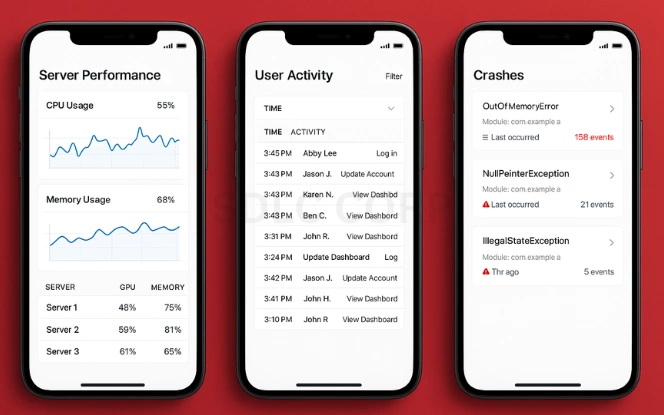
A poker app relies heavily on backend systems for gameplay sync, real-time actions, and data integrity. Latency reduction, security enforcement, and scalable infrastructure are must-haves. Investment in cloud services, databases, load balancers, and uptime monitoring tools ensures a seamless player experience.
Explore our article on Best Practices in Casino Game Backend Architecture.
Poker Game App Features and Cost
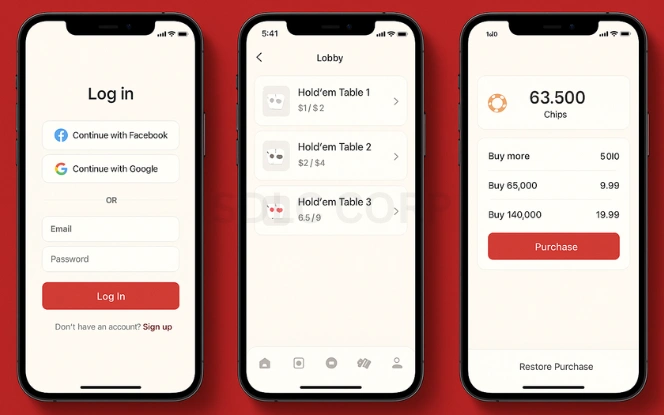
Each feature adds a price tag. Here are core features and their impact:
- User Authentication – Login via email, social media, or mobile number. Adds security layers.
- Lobby System – Lets users join, host, or view games. A basic lobby is low-cost; advanced filters raise cost.
- Game Mechanics – Betting rounds, card shuffling logic, and pot distribution logic need precision.
- Chat System – Enables real-time interaction. A simple text chat costs less than a voice or video chat.
- Secure Wallet – For virtual or real-money chips. Needs bank-level encryption.
- In-App Purchases – Enables monetization. Users can buy chips, tickets, or premium features.
- Admin Panel – Controls tournaments, users, analytics, and reports.
- Push Notifications – Keeps players engaged.
Estimated Cost by Feature Tier:
| Feature Tier | Estimated Cost (USD) |
|---|---|
| Basic App | $15,000 - $25,000 |
| Mid-Level App | $30,000 - $60,000 |
| Advanced App | $70,000 - $100,000+ |
Poker game app features and cost vary heavily based on app scale and intended audience.
For a breakdown of similar cost structures, explore our Fantasy sport app development company
How to Develop a Poker Game App
Building a poker app involves more than just coding. It requires a structured approach that aligns technical development with user expectations and business goals. The process includes everything from initial research to post-launch support. Skipping or rushing any step may lead to an app that underperforms or fails to meet compliance standards.
Here’s a step-by-step guide on how to develop a poker game app:
Step 1: Market Research
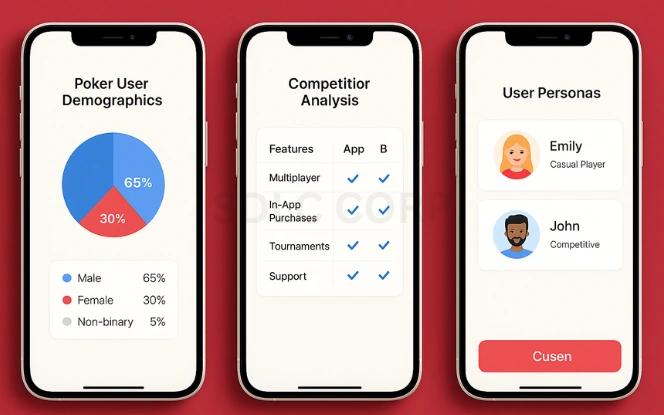
Research is the foundation for your app’s success. Identifying who your target players are, where they play, and what they expect helps shape your app’s design and feature set. This step also includes competitive analysis to assess what similar apps are doing right or wrong and helps avoid market entry mistakes.
Step 2: Feature Planning
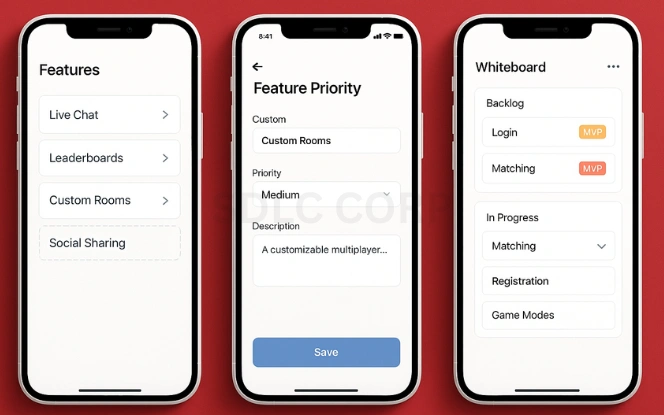
Once you understand your audience, plan the core and advanced features your app will support. Consider must-have components like user registration, chip systems, and betting logic. Planning also involves setting priorities, distinguishing MVP features from future updates, and ensuring the app aligns with monetization goals.
Explore feature planning tips in our post on Building Scalable Leaderboards in Casino Games
Step 3: Design Phase

A thoughtful design phase ensures your app is visually appealing and intuitive to use. This step includes sketching wireframes, defining user flows, and finalizing the UI/UX. Clean layouts, consistent themes, and responsive design increase engagement and usability across devices.
Step 4: Development
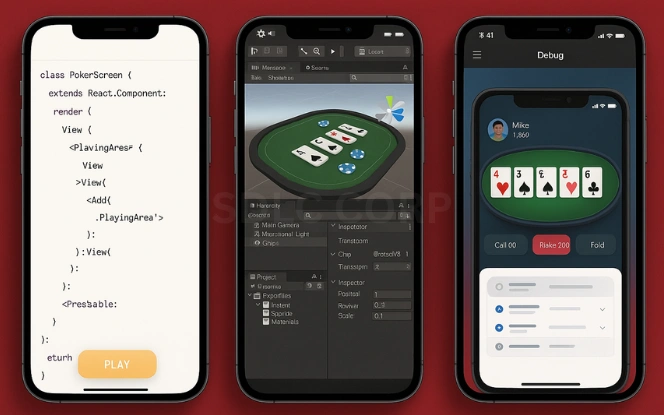
This is where coding begins. Frontend development creates the visible interface, while backend handles gameplay mechanics, user management, and data syncing. Using game engines like Unity or Unreal speeds up visual design, and backend technologies like Node.js or Firebase manage real-time interactions.
Learn the pros and cons of Comparing Game Development Engines: Unity vs Unreal Engine.
Step 5: Integration
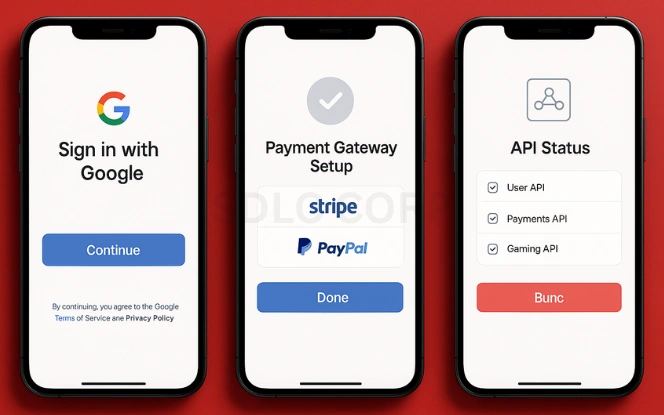
Here, all individual components are tied together. Integration involves connecting authentication services, payment gateways, and live game logic. Proper APIs and SDKs ensure seamless interactions between modules while maintaining data security and gameplay fairness.
Visit our post on Ensuring Secure Transactions on Gambling Apps: What Payment Providers Do
Step 6: Testing
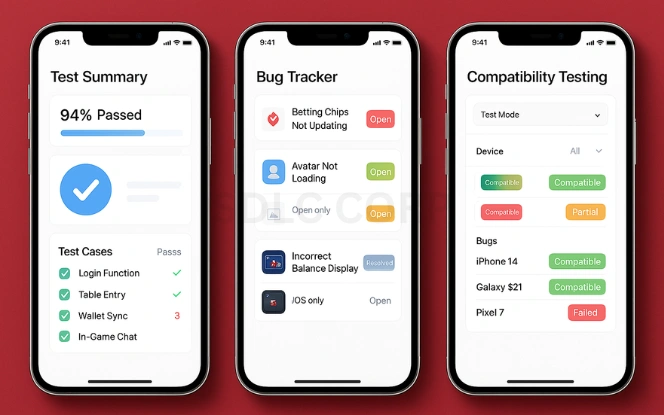
Thorough testing validates the quality and functionality of your poker game. It includes debugging, performance tuning, and fairness checks. Manual and automated tests help catch crashes, delays, or vulnerabilities before the app reaches users.
Explore The 7 Stages Of The Game Development Process [Latest]
Step 7: Launch and Support

After development and testing, your app is ready for release. App store deployment requires meeting platform guidelines and optimizing listing materials. Post-launch support ensures ongoing stability, feature updates, and responsiveness to user feedback.
We recommend reading our article on How to Market Your Mobile Game: Strategies for Success?.
Cost to Build a Real-Money Poker App
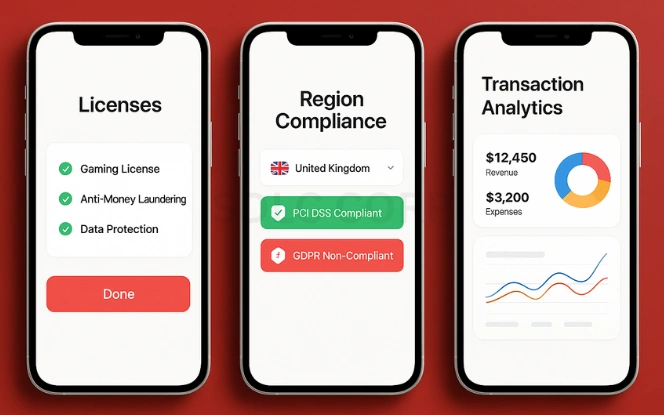
Developing a real-money poker app involves higher complexity and legal obligations.
What Adds to the Cost:
- License and Legal Fees: Must comply with gaming laws.
- Secure Payment Gateway: Payment processing for real-money transactions.
- Risk Management: Fraud detection and anti-cheat mechanisms.
- Data Privacy: Compliance with GDPR and other local data laws.
The cost to build a real-money poker app can range from $70,000 to over $150,000 depending on the region and functionality.
Why Hire a Poker App Development Company?
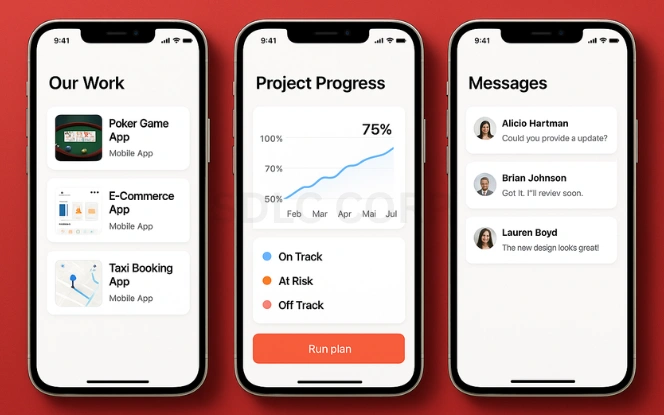
Hiring a poker app development company offers advantages:
- Specialization: They understand the technical and regulatory aspects of poker apps.
- Speed: Professional teams deliver faster turnaround.
- Quality Assurance: Full-cycle testing ensures fewer bugs.
- Post-Launch Support: Maintenance and updates are handled professionally.
An experienced team minimizes risks, ensures compliance, and speeds up delivery.
See our full list of Game Development Outsourcing: Is It Right for Your Business?.
Online Poker Game Development: Technical Considerations
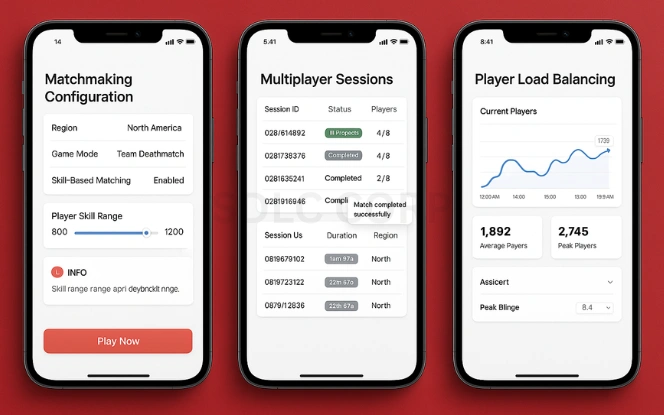
Developing online multiplayer poker requires specific tech architecture:
- Multiplayer Syncing: Real-time updates for all players.
- Latency Control: Optimized for slow networks.
- Matchmaking Algorithms: Fair table distribution.
- Data Storage: Game history, user profiles, and transactions.
- Analytics Integration: Tracks user behavior, retention, and revenue.
Online poker game development depends on selecting the right tech stack. AWS, Azure, and Google Cloud are common hosting platforms.
Want to know more? Explore our blog on Choosing the Right Tech Stack for Rummy Game Development
Conclusion
The poker game app development cost can range from $15,000 for a basic version to over $150,000 for a real-money app. Key factors include platform, features, complexity, and legal compliance. Understanding how to develop a poker game app is crucial before starting your project. Whether you’re targeting a casual audience or building a real-money platform, planning and execution are vital.
For optimal results, consider hiring a poker app development company with experience in real-time gaming and secure payment systems.
If you’re ready to bring your poker app idea to life, Contact us at SDLC Corp.
FAQs
What Is The Average Poker Game App Development Cost?
The average poker game app development cost ranges from $15,000 to $100,000 or more, depending on features, platform, and whether it’s a real-money or play-for-fun app. Apps with real-time multiplayer and payment integrations are typically on the higher end.
How Do I Start Developing A Poker Game App?
To start, you’ll need to conduct market research, define features, choose a tech stack, and hire a poker app development company or experienced developers. Follow a phased plan including design, development, testing, and deployment.
What Features Should I Include In A Poker App?
Must-have features include secure login, game lobby, in-app purchases, chat system, wallet integration, and admin panel. The right mix of features affects both gameplay experience and development cost.
How Much Does It Cost To Build A Real-Money Poker App?
The cost to build a real-money poker app can range from $70,000 to over $150,000, including expenses for secure payments, compliance, anti-fraud systems, and licensing. The jurisdiction you’re targeting can also impact cost.
Why Should I Hire A Poker App Development Company?
Hiring a poker app development company ensures access to domain expertise, quality assurance, faster timelines, and post-launch support. It reduces risk compared to hiring freelancers or managing in-house without prior game development experience.

